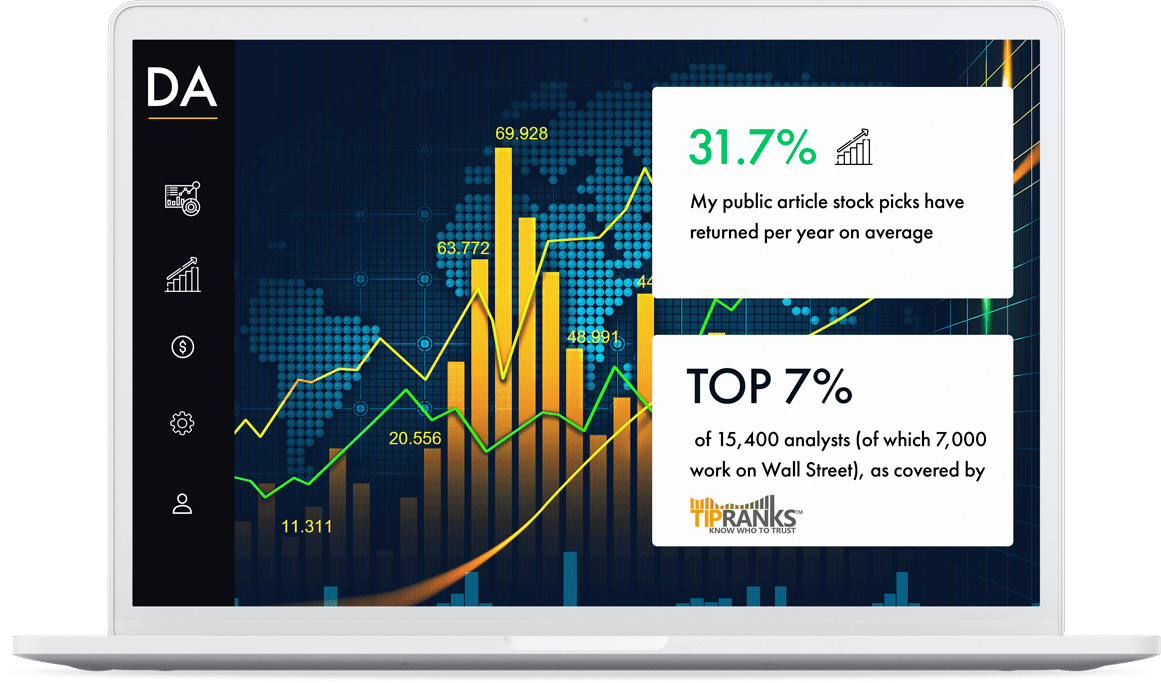Dividend Growth Investing is a popular investing strategy that focuses on companies that pay regular, growing dividends to their shareholders.
Investors buy shares in those companies to generate a source of passive income that grows over time.
DGI investing automatically narrows down the list of potential investments to high-quality, resilient businesses. The companies that have grown their dividend payouts regularly for long time periods have endured many recessions and still managed to generate profits.
Dividend growth sustained over the long run demonstrates a company’s ability to generate cash through all economic conditions.
The goal for most dividend growth investors, is to generate income from investments. This income is then used to fund their expenses in retirement.
What Is a Dividend?
Dividend is a cash distribution by a company to its shareholders.
It’s basically a share of the company’s profits. As a shareholder (owner of the stock) you own a small part of the company.
The amount you receive is based on the amount of shares you own.
For example, company X declares that they are paying a dividend of $1.00 per share. If you own 100 shares of company X you will receive $100 ( 100 shares x $1.00 dividend). Most companies in the US pay dividends each quarter.
Shareholders in dividend-paying companies get paid a portion of the company’s profits through cash dividend payments.
Benefits of Dividend Growth Investing
- Dividend payments are a real cash return on your investment
- You don’t need to sell shares to make money
- Your invested principal remains intact
- Dividend growth shows the strength of the company’s business
- Reinvesting the dividends compounds your returns
- Dividend payments don’t depend on stock prices
It’s not ideal to be nervously checking the stock market to see how the share prices are fluctuating. The market can be very irrational in the short term.
Dividend investors don’t have their investing success tied to the stock price.
Their goal is growing income, not a rising stock price. If things go as planned, dividend amount and income grow year by year.
What About Non-Dividend Payers?
Not all companies pay dividends. Young, fast growing companies often don’t pay a dividend, as they put all their profits into trying to grow their company. These companies do not pay their shareholders in cash.
You can make money in these stocks by trading ( buying and then selling your shares at a later time). However, this requires someone else to be willing to buy them off you to make a return on your investment.
Track Record of Dividend Growth Matters
Investing in companies with long dividend growth history means that we would be investing in great businesses. They have shown the strength to survive and increase their dividend payments. Even during tough economic times.
The cash that the company generates is what they use to pay and grow the dividend. A growing dividend means the company is generating more and more cash.
My investing goal is increasing my passive income. By the time I retire I want it to be big enough to live off (and increasing yearly). Therefore I want to put my money in companies that keep on giving me cash. The cash gets paid to me in form of dividend payments. I also want those companies to keep increasing the amount of cash it gives me.
Check out my personal investment portfolio.
Example
Let’s say that we invest in a company yielding of 3% per year. This means for every 10.000€ invested, $300 per year gets paid as a dividend. That does not seem like a lot initially. A crucial factor in choosing the companies to invest in is dividend growth. Companies that pay consistent, increasing dividends are providing growing income to investors.
Let’s say the 3% yielding company grows its dividend by 7% per year. This will meaningfully increase the investors income over the long run.
That $10.000 initial investment in 15 years would pay a dividend of $774 if the dividend growth remained constant at 7%.
And if dividends were reinvested the amount received in year 15 would be $1139.(!)
We can estimate the future dividend income for that investment using our Dividend Growth Calculator.

Dividend raises significantly increase investor’s returns over the long term.
The Power of Re-Investing Dividends
As the dividend payments grow, investors income increases. However, there is a second lever of income growth for dividend investors.
It is called Dividend Reinvesting.
As you receive dividend payments, you can do what you want with that money.
Eventually, most income investors use that money to cover their expenses.
But until you need that money, those dividends can be reinvested. This will grow dividend income even faster. As you reinvest the dividend cash into more dividend-paying shares, your income increases as well.
On the graph below, we can see the power of reinvesting dividends.

On the blue line, the dividends are withdrawn every year WITHOUT re-investing them.
The dividend income still increases year-over-year. That’s due to dividend raises.
That $5000 yearly dividend payment increases to $7563 by year 15 through dividend raises alone.
On the yellow line, all dividends are re-invested back into dividend-paying shares.
The dividend income on the yellow line grows because of two factors. From dividend raises by the company AND through owning more shares by reinvesting dividends.
The initial $5000 dividend income increases to a whopping $14686 by year 15 WITH dividends reinvested.
As we can see, dividend reinvesting makes a HUGE difference over the long run.
It is worth noting, that the higher the yield – the more reinvesting affects your returns.
Dividend reinvesting supercharges dividend investing returns
Read more about dividend reinvesting here.
Dividend Growth Investing Risks
The biggest risk to a dividend investor is a dividend cut.
Dividends are never guaranteed.
The company’s board decides on each dividend payment. They have no obligation to pay dividends to shareholders.
If the business runs into trouble, it might be in the company’s best interests to reduce or eliminate dividend payments.
This would mean reduced or no income for investors. However, management usually doesn’t take this path lightly. Dividend payments are seen as a sign of confidence. Eliminating dividends often has a negative effect on the company’s share price and reputation.
Continuous dividend payments can only be sustained if the company is on sound financial footing.
Dividends are paid out of free cash flow. Growing dividends indicate that the company is performing well. To increase the dividends sustainably, the company’s free cash flow has to grow as well. This is why a long track record of dividend growth is a sign of a resilient company.
There are two main categories to analyse dividend safety.
- Dividend Sustainability
- Debt Levels
Dividend Sustainability
Dividend sustainability is best measured by Free Cash Flow Payout Ratio.
Free Cash Flow is essentially the cash generated by the business, after the company pays for all the required expenses to keep the business running.
FCF payout ratio shows us, how much of that free cash flow generated is paid out as dividends.
FCF Payout Ratio= Dividend per share/ FCF per share x 100
Example = $0.4 dividend per share / $0.8 FCF per share x 100 = 50% FCF Payout Ratio
If the payout is over 100%, it means the company can’t afford to pay the dividend from its operations any more. In this case, the dividend can be paid from borrowed money, retained earnings or asset sales.
This is not sustainable over the long run.
The lower the payout ratio, the more comfortably the current dividend is covered.
Usually more cyclical companies tend to have lower payout ratios. They need to be prepared for bigger fluctuations to their earnings.
In the other hand, companies whose revenues are steady in all economic conditions are likely to be comfortable with higher payout ratios.
I personally look for FCF Payout Ratio below 60% in potential investments. This is a figure that each investor should determine in their personal investment plan.
Debt Levels
A company’s debt can also threaten its dividend. If the company needs to spend a lot of the cash it generates on servicing its debt, the dividend is not as safe.
If a company struggles to finance its debt, the dividend might be sacrificed as a way to save cash.
A dividend cut is a way for the company to preserve cash if they run into trouble.
Debt levels can be measured by analysing the company’s balance sheet.
Personally, I use 3 ratios to evaluate balance sheets.
- Debt/Equity – calculated by dividing total liabilities by the shareholder’s equity. It shows how much is debt used in financing the company’s operation versus the equity owned by shareholders.
- Debt/EBITDA – this ratio shows us the total amount of debt in comparison to yearly EBITDA generated by the company. It takes the total debt levels and divides it by yearly earnings before interest, taxes, depreciation and amortisation.
- Interest Coverage – measures how easily the company can pay the interest on its debt. It’s calculated by taking the yearly EBIT(earnings before interest and tax) and dividing it by yearly interest payments.
Check out the video below where I explain those ratios in easy-to-understand terms.
It’s important to know that companies in different sectors have very different debt levels.
Read more on dividend safety here.
Misconceptions about dividend growth investing
- Dividend stocks provide no growth – This is probably the most wide-spread misconception. People expect dividend stocks to be some boring, stagnating businesses. In reality, for a company to grow dividends over a long time period – it has to be growing earnings and cash flows as well. In the long run, that earnings and cash flow growth will also pull the stock price up with it. You wouldn’t call Apple or Starbucks a boring, stagnating business would you?
- Dividend growth investing is just for people who are already wealthy – Yes, to generate significant income in year 1 of dividend investing, you need a lot of capital. However, what makes dividend growth investing so powerful, is the combination of dividend raises and dividend re-investment. Those 2 factors compound investor wealth and income over time. Investors starting with small investment capital but staying consistent with it, can achieve great returns.
Summary
Dividend Growth Investing is an investing strategy that focuses on income. Investors buy ownership stakes in companies with the expectation of receiving cash payments. Investors income grows over time through dividend raises and dividend reinvesting. It’s one of the many investing strategies out there. It is most popular amongst investors, who want to generate an income stream to fund their retirement.
Disclaimer: This is NOT a recommendation to buy or sell any shares. You can lose your invested capital.I am not responsible for the accuracy of any of the data presented in the article. I am not a financial professional of any kind. None of the information here should be considered as a basis for financial planning. Any stock transactions or analysis published should NOT be considered to be investing recommendations. Before making any investing or financial decisions, you should contact an appropriate professional.This website should be viewed for entertainment purposes only.









